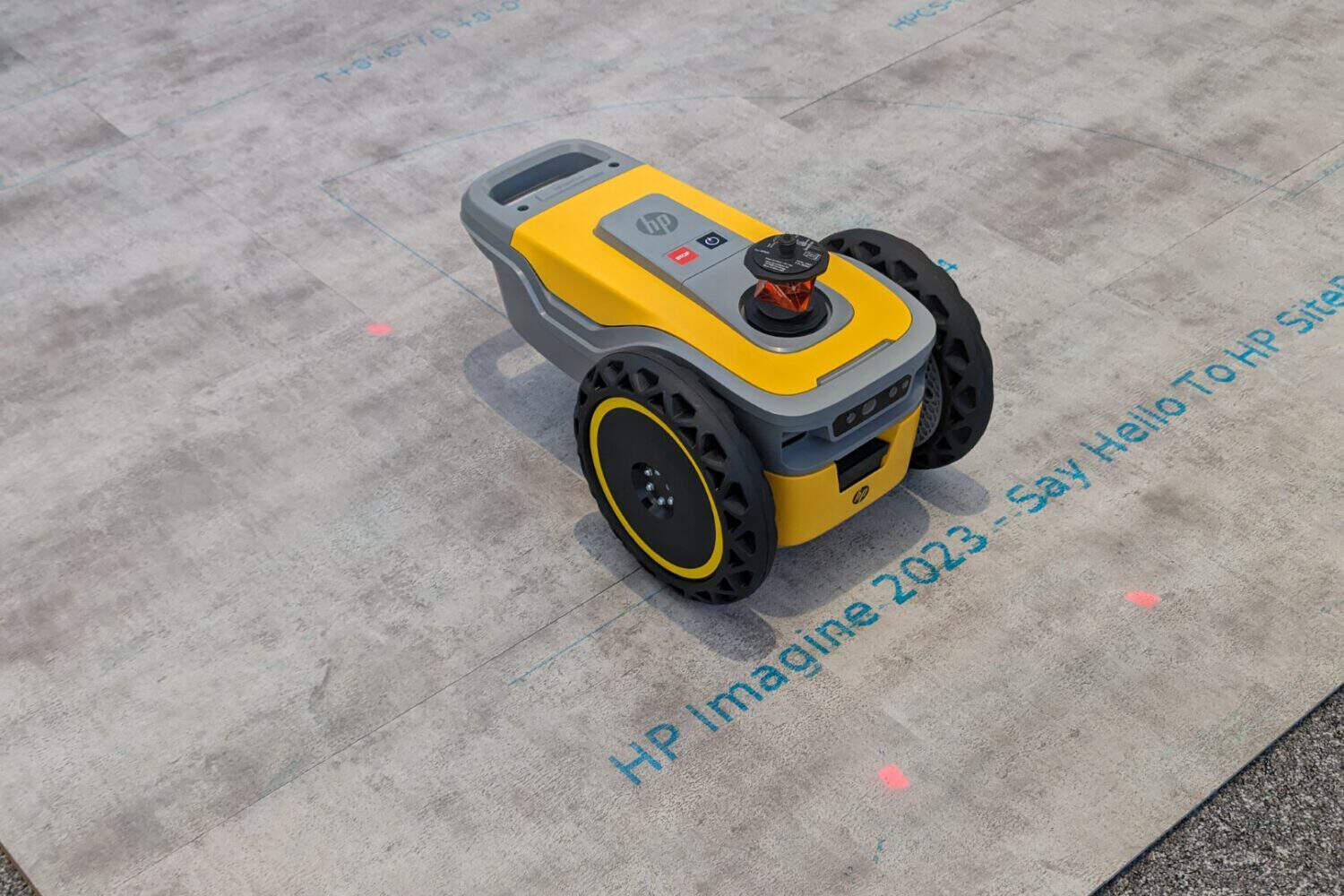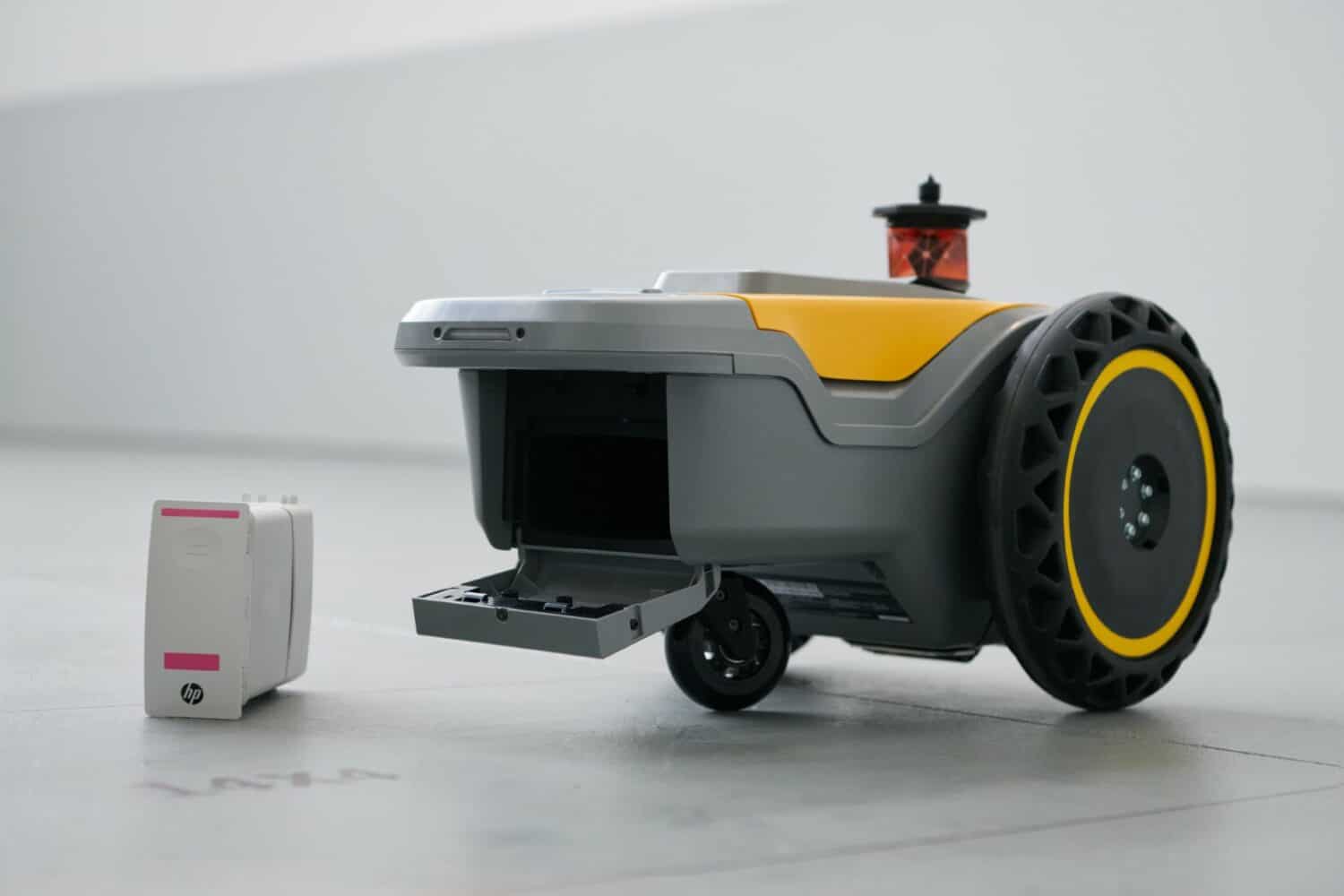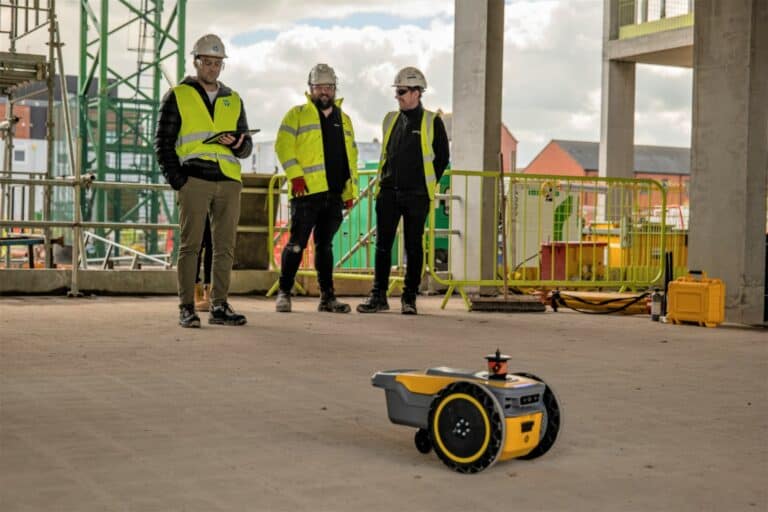SitePrint allows construction companies to print construction blueprints on the ground at construction sites. This should save considerable time compared to the old, manual way.
HP operates in many areas within the printing market. It serves the consumer market, SMEs, the enterprise market and has a strong presence in other areas with its 3D printing portfolio and latex and label printers. During HP Imagine 2023, we also learned about SitePrint, launched a few months ago. This new printer targets construction companies.
Modern technology in traditional world
Construction companies generally spend a lot of time accurately copying the layout of new buildings from paper prints onto the floor of a new building to be built, usually using something like chalk. HP can use SitePrint to reduce the time it takes to draw this layout from three weeks to three days, indicates Daniel Martinez, General Manager Large Format Business at HP, in conversation with us. This is not only about the time it takes to draw/print the layout in the first place, but also about the mistakes that are regularly made when doing it manually. These sometimes cause the project as a whole to be delayed by as much as weeks.

Martinez has been working with his team on this product, which was officially launched in the US and UK&I on July 19. During Imagine 2023, HP announced that it will also be available in the DACH region from November. This means that the initial rollout in the first two regions has been successful and it is now time to scale up further.
The construction industry is a pretty conservative world, we gather from the results of a survey HP commissioned from this industry. One of the findings was that only three percent of the CIOs of these companies have made investments in on-site technology that can increase productivity in the past 12 months. This while productivity in the construction industry has been declining since the 1960s, Martinez adds.
Increasing productivity is very important, Martinez illustrates with an example. Every day a construction company is working on the layout of an Amazon warehouse costs Amazon $30,000. That’s a lot of avoidable cost. When the time this takes goes down from weeks to days, it makes a big difference.

HP SitePrint
So far, no one has managed to reverse the construction industry’s downward trend in productivity by introducing new technologies. There are several explanations for this. First of all, the people who have to work with it are often not tremendously skilled with this type of technology. In addition, the technology simply wasn’t ready for it either. It all has to be very accurate, of course. Otherwise, construction workers will build the ‘wrong’ building.
HP SitePrint, according to Martinez, has an accuracy of 3 millimeters. That means it never deviates more than 3 millimeters from the building drawing. This makes it possible for the first time to outsource the creation of the layout for a construction project to a machine. And that therefore saves an enormous amount of work. Of course it is important that the original drawings are correct, but that goes without saying.
Good to mention is that you can not only print (complex) patterns on the floor. It is also possible to print text and QR codes. That makes HP SitePrint a little more versatile. After all, it makes it possible, for example, to display specific instructions or information for construction workers at a particular site. With a QR code, you can have someone immediately find out how many parts are still in stock for that particular job, Martinez gives as an example.
How does HP SitePrint work?
HP SitePrint is more than the printing robot that draws patterns on the floor. Construction companies that want to use it also need what is known as a Robotic Total Station (RTS). That’s a tripod with the RTS on top. This controls the print robot. This works through a connection between a lens/prism on top of the print robot and a lens/prism in the RTS. Line-of-sight is thus a requirement. The robot also houses a camera and LiDAR and safety sensors. These enable it to avoid obstacles, among other things. The operator of the HP SitePrint robot uses a computer (tablet, pc) to setup and control the printer. Network access is required for this. The computer and e the printing robot need to be connected to the same network.
For moving between different print jobs, HP supplies a controller. The HP SitePrint manual shows that this is a HyperX gaming controller. HP clearly leverages its broad portfolio here.

HP has partnerships with the major RTS vendors. Those are Leica Geosystems, Topcon and Trimble. Whether these are also the established names in our region, we don’t dare say right away. Since HP SitePrint will also be available in the DACH region from November, we expect so. If not, support for other popular RTS brands will no doubt follow. Good to note is that not all RTSs are suitable. Not even all models from the three brands HP SitePrint works with. So construction companies may have to invest in new RTSs if they start working with HP SitePrint. This potential extra investment starts at about 5000 euros.
HP SitePrint is suitable for many types of floors
Finally, we asked Martinez about the ink that HP SitePrint uses. According to him, this is not a fixed type. HP uses inks from the entire Large Format portfolio. Here, of course, the purpose of use plays an important role. On exhibition floors, it is important that the layouts can be easily removed again. When used outdoors for permanent construction projects, you need inks that do not fade in direct sunlight or in bad weather conditions.
HP SitePrint is a printer that uses ink. Does that also mean HP uses the same cartridge replacement model usually associated with it? Running out of ink in the middle of a job is not an option, so HP SitePrint works a little differently. Construction companies don’t have to estimate in advance how much ink they need. They pay a fixed sum in advance, based on the desired outcome. In return, they get a guarantee that they will have enough ink. So it shouldn’t happen that a project comes to a halt for a day or so because the HP SitePrint robot runs out of ink.
HP SitePrint can’t do everything (yet), but reception in the market is good
The way HP SitePrint is built affects its suitability for certain tasks. Since the print head sits relatively far from the edge of the device, it is not suitable for environments that require printing very close to a wall. Martinez therefore calls residential applications not yet possible. That is, printing patterns on the floor of a home environment isn’t possible yet. HP SitePrint is currently focused primarily on large warehouses, but there is now some interest from hospitals as well.
In general, the reception in the market since July 19 has been good, Martinez indicates. He talks about exponential growth. Not just because early adopters are putting down more and more HP SitePrint units. The companies that are using it are also simply starting to use it more and more, every month. In total, HP SitePrint has already printed about 2 million square feet at the various HP customers already using it. As the product starts to be rolled out in more countries, that will only grow faster.
We find it difficult to estimate whether 2 million square feet in 2.5 months is a lot or not. There’s not that much comparison material. But that is also precisely what makes HP SitePrint interesting as far as we are concerned. This is a totally new category of printer. Printing may occasionally have the image that the innovation is gone, developments like HP SitePrint prove otherwise.
Also read: Printers and MFPs remain important, but must keep up with the trends
